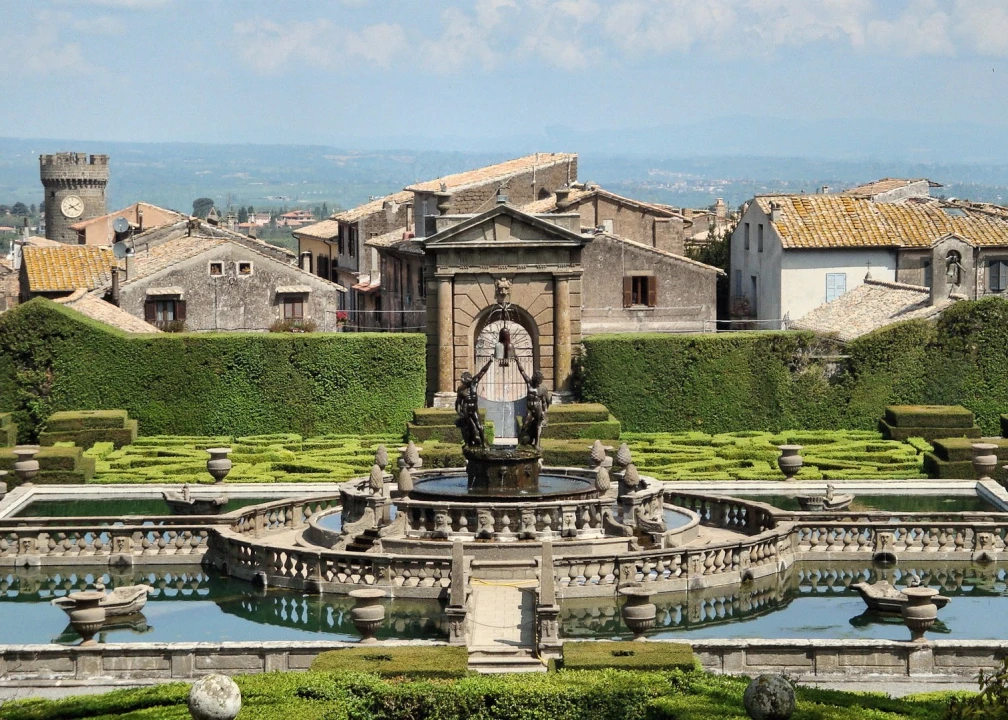Villa Lante dates back to the 16th century and its conception is attributed to Jacopo Barozzi da Vignola. It is located south of the medieval village of Bagnaia, on the slopes of the Cimini mountains in the Lazio region, and is connected to it by three roads converging towards the main square. Although it was designed, like Villa Farnese in Caprarola, by Jacopo Barozzi da Vignola, and although the two villas are built in the same area, in the same period and in the same architectural style, the two monuments do not retain important similarities.
The 18-hectare park, now only a small part of which is annexed to the villa, was originally intended for hunting and resting. There are numerous fountains in the park with sculpted peperino stone elements and seats distributed along the entire route.
The formal garden is bordered by a boundary wall that runs along the Roman road and, towards the park, by terraced walls.
At the top is the Grotta del Diluvio surrounded by tall boxwood hedges (Buxus sempervirens). The Dolphins' Fountain consists of degrading pools connected by sculptural elements, masks, vases and reliefs and the water takes various forms.
The Villa is crossed longitudinally by a stream that flows upwards from the rock and follows the slope of the ground, exploiting the differences in height and connecting them with terraces and fountains until it subsides into the square of the Fountain of the Moors, a stretch of water divided by balustrades into four basins on which floats a boat with a gushing putto and in the middle a triple circle of pools culminating in the group of four Moors holding the coat of arms of Pope Sixtus V.
The Chain Fountain at Villa Lante is characterized by water that flows and descends along a path linked by the claws of a shrimp. The water then resumes its run towards the Lumini Fountain, forming many flames of silver candles.




